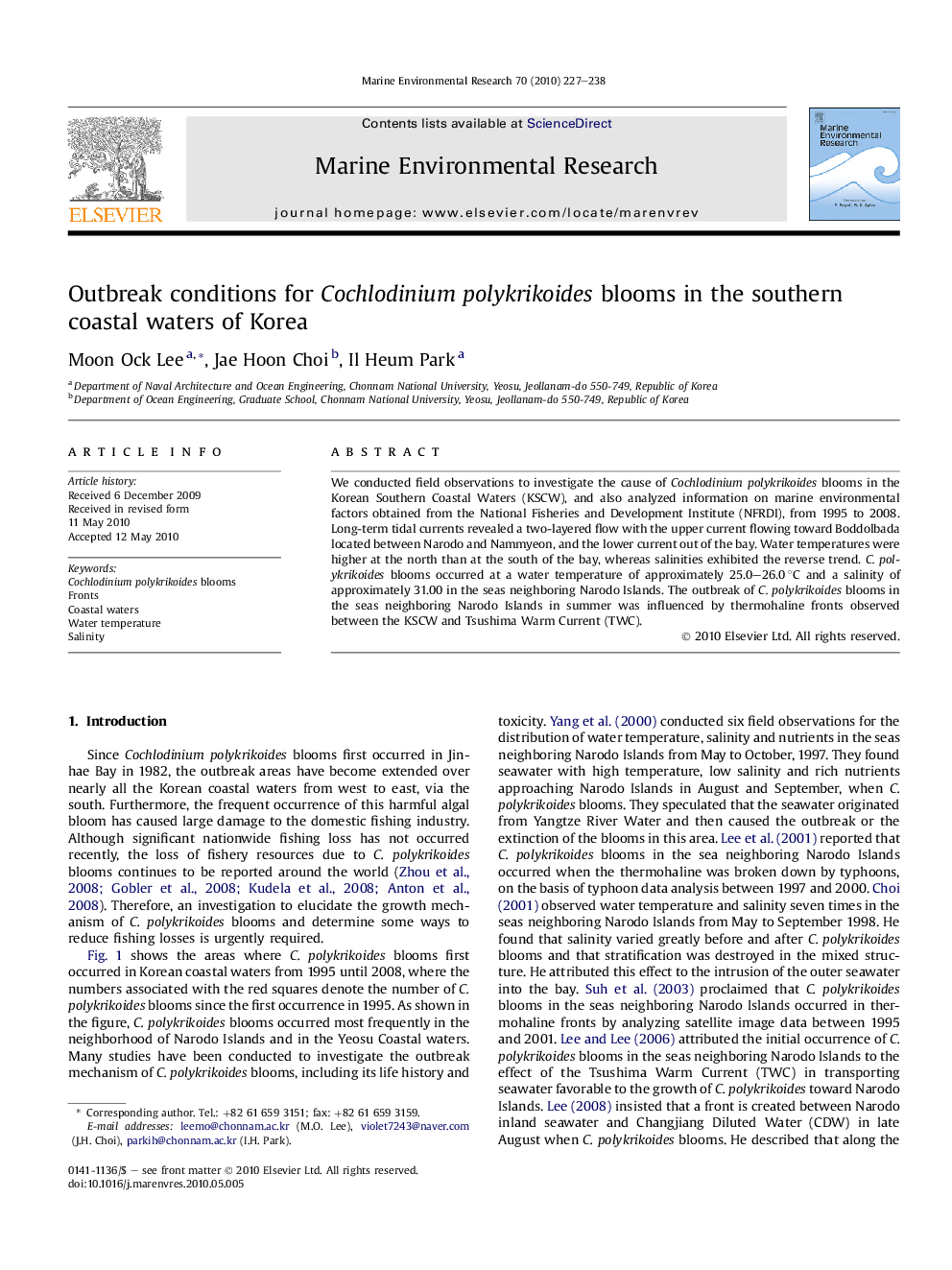| Article ID | Journal | Published Year | Pages | File Type |
|---|---|---|---|---|
| 4551241 | Marine Environmental Research | 2010 | 12 Pages |
Abstract
We conducted field observations to investigate the cause of Cochlodinium polykrikoides blooms in the Korean Southern Coastal Waters (KSCW), and also analyzed information on marine environmental factors obtained from the National Fisheries and Development Institute (NFRDI), from 1995 to 2008. Long-term tidal currents revealed a two-layered flow with the upper current flowing toward Boddolbada located between Narodo and Nammyeon, and the lower current out of the bay. Water temperatures were higher at the north than at the south of the bay, whereas salinities exhibited the reverse trend. C. polykrikoides blooms occurred at a water temperature of approximately 25.0-26.0 °C and a salinity of approximately 31.00 in the seas neighboring Narodo Islands. The outbreak of C. polykrikoides blooms in the seas neighboring Narodo Islands in summer was influenced by thermohaline fronts observed between the KSCW and Tsushima Warm Current (TWC).
Related Topics
Physical Sciences and Engineering
Earth and Planetary Sciences
Oceanography
Authors
Moon Ock Lee, Jae Hoon Choi, Il Heum Park,
